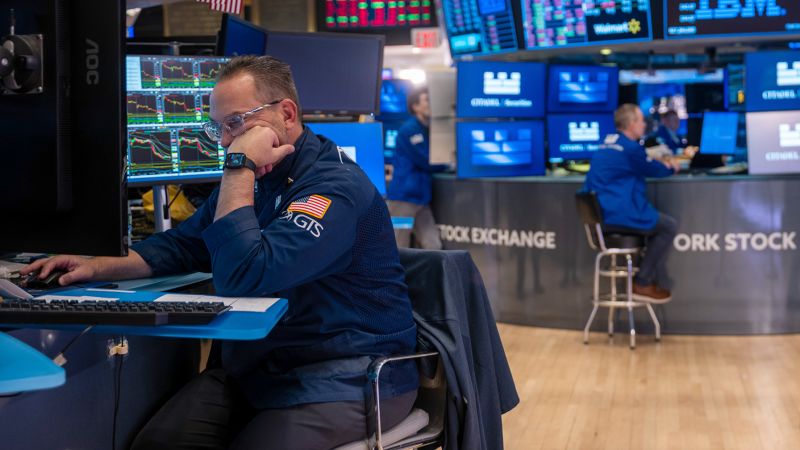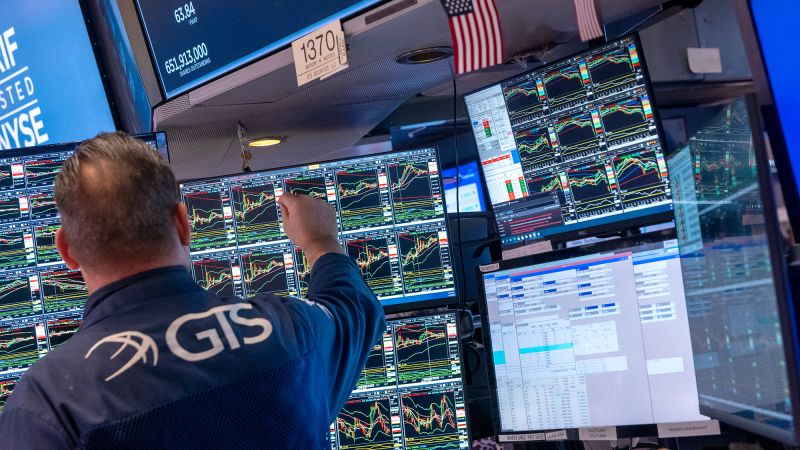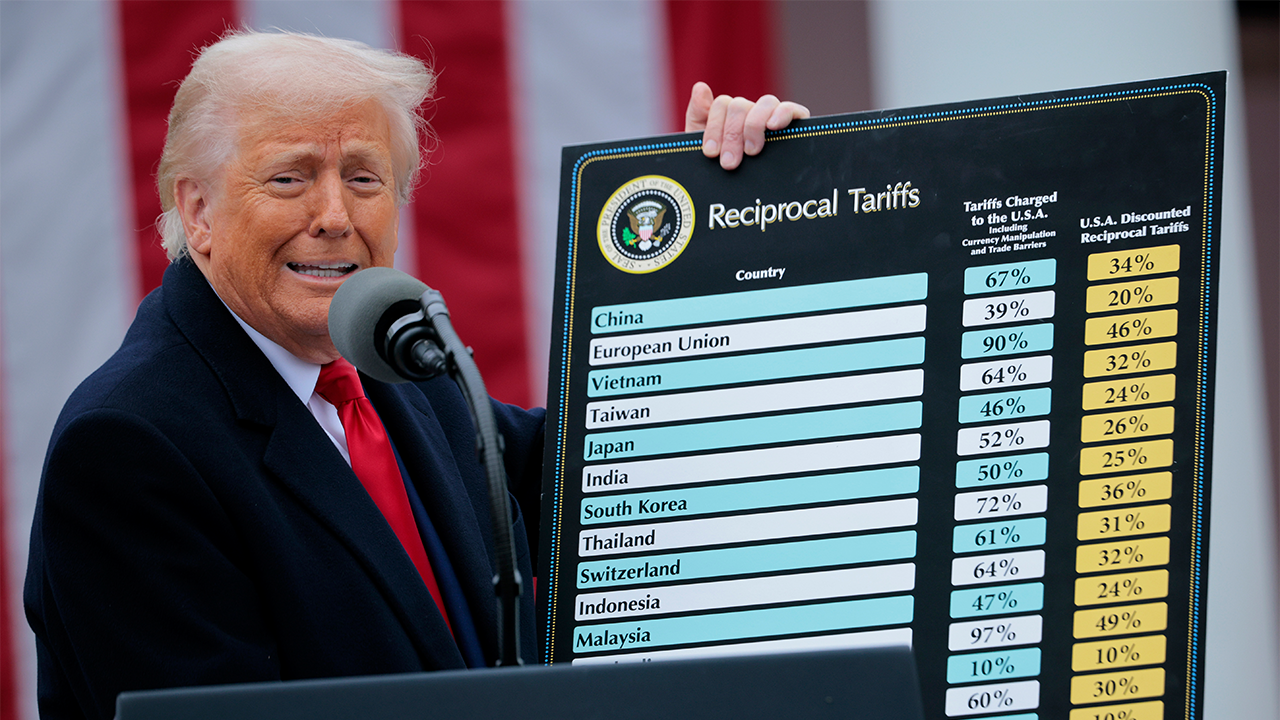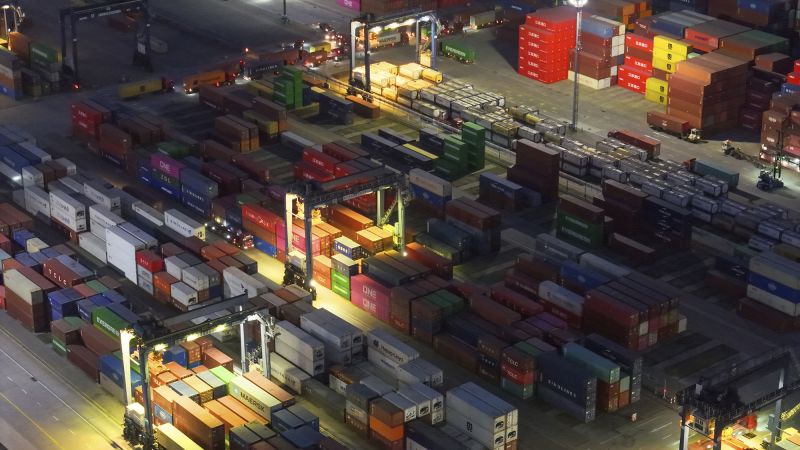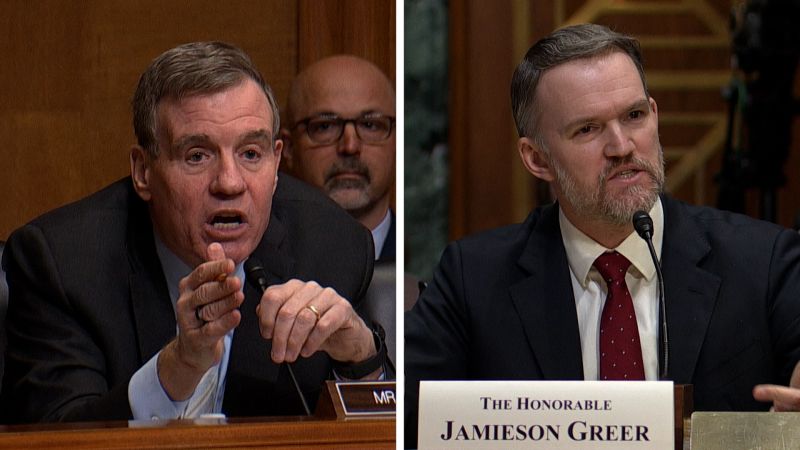New York
As Wall Street heads into a new quarter, a flurry of President Donald Trump’s tariffs are set to go into effect. That has traders on edge and has helped put US stocks in their worst first-quarter slump in years.
Wall Street has been rocked with volatility this year as Trump’s tariff proposals have kept investors in a cloud of uncertainty. The benchmark S&P 500 index is down almost 6% for the year, its worst start since 2020.
US stocks were lower Monday. The Dow was down by 50 points, or 0.1%, pulling back from opening lower by about 300 points. The S&P 500 was lower by 0.8% and the Nasdaq Composite slid 1.8%. The S&P 500 briefly reentered correction territory, down 10% from its record high in February, and dropped to its lowest level since September.
Stocks around the globe were lower Monday ahead of Trump’s so-called “Liberation Day” this Wednesday when reciprocal tariffs in addition to others are set to go into effect. Economists anticipate the sweeping tariffs could spur inflation and drag on economic growth.
The full extent of Trump’s tariffs is yet to be seen, and the lack of clarity has weighed on Wall Street. Analysts at Goldman Sachs on Sunday lowered their year-end target for the S&P 500 to 5,900 from 6,200. That comes after analysts at the bank earlier this month lowered their target to 6,200 from 6,500.
Analysts at Barclays last week lowered their year-end target for the S&P 500 to 5,900 from 6,600. Wall Street has been revising down its forecasts amid heightened concerns about the impact of Trump’s tariffs on the US economy.
The economy faces a growing risk of a recession as tariffs could hinder growth, increase unemployment and contribute to inflation, according to Goldman Sachs. The bank on Sunday said it sees a 35% chance of a recession in the next 12 months, up from 20% previously.
Heading into this year, US stocks had been at record highs, with some strategists questioning how much room was to left to rally. Analysts had expected Trump to usher in a pro-business boom, enabling the stock market to continue its historic run.
However, Trump’s commitment to an economic agenda that prioritizes tariffs has left some investors perplexed. Trump has not given markets the same attention as he did in his first term, while investors have had to reckon with other factors on top of tariffs, such as debates over the value of the artificial intelligence boom. The tech-heavy Nasdaq Composite is down 12% year this and on track for its worst quarter since June 2022 and worst start to the year since 2020.
Meanwhile, gold has surged this year. The most actively traded gold futures contract in New York on Monday surged above a record high $3,150 a troy ounce. Gold is considered a safe haven amid economic turmoil and a hedge against inflation.
As Wednesday approaches, investors are still uncertain about the extent of the tariffs and businesses and consumers are bracing for impact. Trump on Saturday told NBC News that he “couldn’t care less” if automakers raise prices because of tariffs.
“The administration cites fairer trade relationships as the goal, with reciprocity the governing principle for implementing tariffs. But beyond that, little is known about what this policy will entail,” analysts at Morgan Stanley said in a Monday note.
“This isn’t exactly reassuring to investors we talk to, who are perplexed by the dynamic of tariff announcements, negotiations, delays and shifting levels of implementation for Mexico, Canada, China, and some key products,” the analysts said.
US government bonds rallied on Monday as investors flocked to safe haven assets. The yield on the 10-year Treasury note fell to 4.21% as investors snapped up bonds.
“The comments leading up to this are still a lot of mixed messages and so the uncertainty level is still high, and nobody really knows what to expect,” said Thomas Martin, a senior portfolio manager at Globalt Investments.
“We’re going to get an announcement and and we’re still not going to have clarity. And I think that’s the main thing we’re going to be living with for a while,” Martin said.
Global markets have similarly been shaken by Trump’s tariffs. In Japan, the benchmark Nikkei 225 tumbled 4% on Monday and closed in correction territory, down 10% for the first quarter. Taiwan’s benchmark index also tumbled more than 4% and closed down 10% for this quarter.
In Europe, the STOXX 600 index was down 1.4%. Germany’s DAX index also fell 1.4%.
Wall Street’s fear gauge, the Cboe Volatility Index, or VIX, surged 9%. “Extreme fear” was the sentiment driving markets on Monday, according to ’s Fear and Greed Index.
“Its all about the tariff uncertainty and how much tariffs and counter measures will be announced,” said Mohit Kumar, chief economist and strategist for Europe at Jefferies, in a note Monday.
This is a developing story and will be updated.







